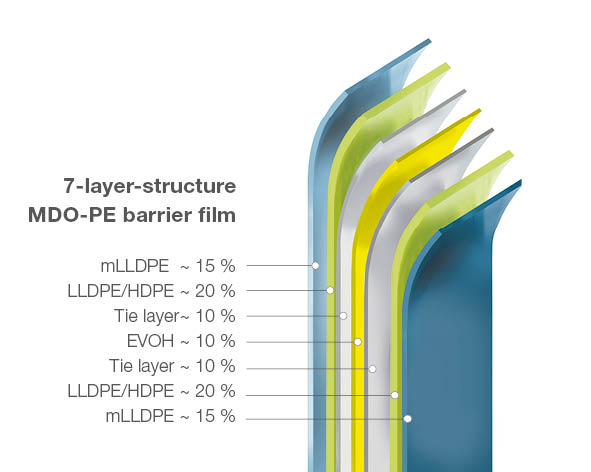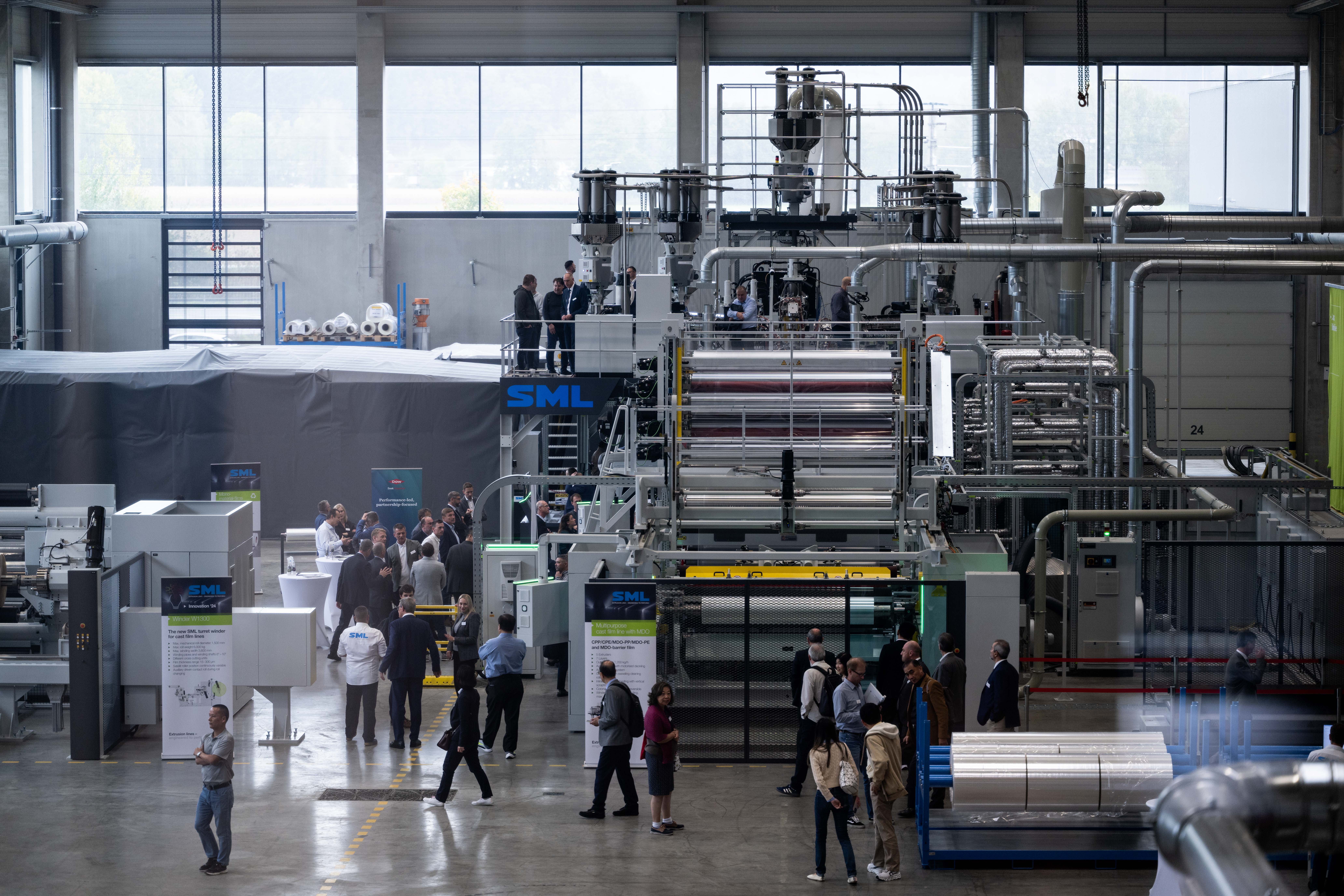Breadcrumb
MDO-PE film as thin as 15 micron: Cast film technology to revolutionise mono-material packaging solutions
A thickness range from extremely thin 15 µm to 60 microns, production speeds up to 300 m/min, a perfect thickness profile across the entire film width, and the possibility to manufacture various mono-material PE film types are the main advantages of SML’s latest cast film line with an integrated MDO unit.
“The mono-material PE films produced on our new cast film line are characterised by excellent mechanical and optical properties. One of the key advantages of ultra-thin MDO-PE film is the significant reduction in material consumption,” Elias Mayrhofer, Product Manager at SML states. SML cast film lines are ready to manufacture MDO-PE film as thin as 15 µm. It goes without saying that the process is completely stable, with no compromises when it comes to performance, functionality and printability.

Barriere layer for extended functionality
For sensitive foods that require packaging with high-barrier properties, a 7-layer MDO-PE barrier film in a thickness range of 25 µm to 60 µm is another area of application covered by SML’s cast film line. The barrier layer of EVOH or PVOH in the MDO-PE film significantly increases the oxygen barrier, while recyclability is maintained due to its low share in the actual film structure.
A 25 µm MDO-PE barrier film consisting of 38% MDPE, 27% HDPE, 19% Tie, 12% EVOH, 3% LLDPE, and 1% additives and a layer distribution of 15/20/10/10/10/20/15 % reveals the following barrier properties:
- OTR (oxygen transmission rate) at 23 °C, 0 % RH: 1 – 5 cm³/m² 24hr
- WVTR (water vapor transmission rate) at 23 °C, 90 % RH: 6-8 g/m² 24 hr

Cast technology enables exceptionally low tolerances
Generally, SML cast film lines stand for optimum film flatness due to controlled cooling on the chill roll. Since the die bolts are individually controlled, thickness control across the entire film width is highly effective and straightforward. “Additionally, the thickness profile of the primary film in the edge area ahead of the MDO process can be adjusted easily and very precisely. This all contributes towards creating a perfect thickness profile across the entire width”, Elias Mayrhofer concludes.
Advanced MDO Unit
Special attention was paid to the design of the MDO unit: the distance between the stretching rollers in the MDO unit can be reduced to as little as 3 mm, the adjustment of the stretching gap takes place in a motorised fashion. The positions of the nip rollers in the stretching area are also adjustable. This ensures an ideal stretching process of the film, irrespective of the defined stretching gap.
The number and the diameter of the annealing rollers provide optimum film stabilisation and minimise any residual shrinkage, which is especially important for subsequent processes such as lamination or printing.
All of the rollers in SML’s MDO unit are driven and tempered separately. Instead of oil, SML uses water to temper the rollers, which is both economical and maintenance-friendly.
Product flexibility and variety
SML’s cast process offers tremendous opportunities for the production of forward-looking packaging solutions: in addition to MDO-PE film, the line is also capable of producing conventional and barrier film from PE or PP as well as films for metallisation.
Redlham, 08.10.2024
